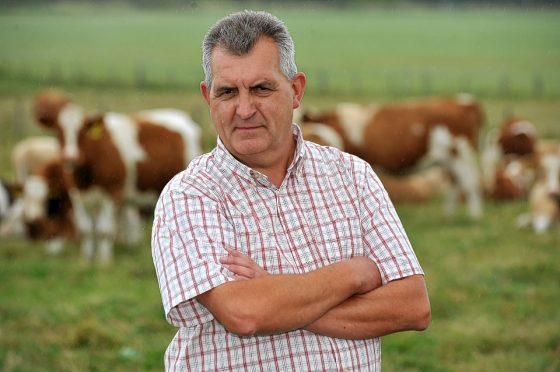A year has passed since the EU referendum and the decision of the British people to take us out of the European Union. Article 50 was triggered by the UK Government earlier this year, and it is time for serious plans for the future of Scottish agriculture.
Our vision for Scottish agriculture is: “To be profitable, innovative and efficient with farmers and crofters securing a fair return from supply chain partnerships allowing less reliance on direct support.”
In this vein our union, NFU Scotland, has launched its discussion paper, Change, on the aims of a new agricultural policy for Scotland post-Brexit.
The paper covers three areas mainly a fairer supply chain, a supported transition and developing our people covering different aspects of agriculture and how they affect us now, and are likely to do so in the future.
A fairer supply chain means that we as primary producers need to receive a fair share of the supply chain cake. While vast steps have been taken in the increasing desire of our customers to support the provenance and quality of our produce, this has yet to be reflected back to the primary producer in terms of farmgate prices.
The Scottish food and drink sector is an increasingly valuable asset to Scotland and is our leading exporter. It is led by the Scotch whisky brand, yet the malting barley producers are struggling to make ends meet. What a difference a consistent higher price for malting barley would make to the farmer suppliers.
More and more retailers are committing to using Scottish produce – this will surely help with demand and price, but more could be done to support us through public procurement and the catering trade upping the use of local produce. After all high quality, high welfare standards and provenance come at a cost.
We want a supported transition because for the most part, since the formation of the EU, the main aim has been to have a supply of readily available, quality food at a reasonable price for the people of Europe. The Common Agricultural Policy (Cap), while branded as an agricultural support scheme, was in fact a cheap food policy.
If this is no longer the main aim, farmers and crofters need to be given clear signals from governments as to what farming is expected to deliver for the country. Hopefully that message will include the need for quality home produce for the health and wealth of the nation. If support is to be reduced then the market must deliver increased prices for agriculture to prosper conversely, and if a cheap food policy is to be pursued then more support may be needed.
The more remote and challenging farms found within much of Highland region, as always have the least opportunities to change what and how they produce, and they are likely to always need some support to help deliver the countryside that our tourism industry lives off.
Lastly the area about developing our people comes from the need to increase and adapt the level of skills within the agricultural sector, to cope with the ever-changing world that we live in.
We need a flexible and skilled workforce to ensure a productive future. This is likely to include the need for overseas workers and this is an issue that needs to be addressed in any future policy. There is also a need to educate the general public as to all the benefits that are delivered by us as farmers but often not appreciated.
There will be many chances to get your views across.
Throughout the summer your office bearers – president Andrew McCornick, vice-presidents Martin Kennedy and Gary Mitchell – as well as local group secretaries and regional managers will be out and about at the shows.
*Martin Birse is NFU Scotland chairman for the Highland region. He is farm manager at Pitgaveny Farms, by Elgin
